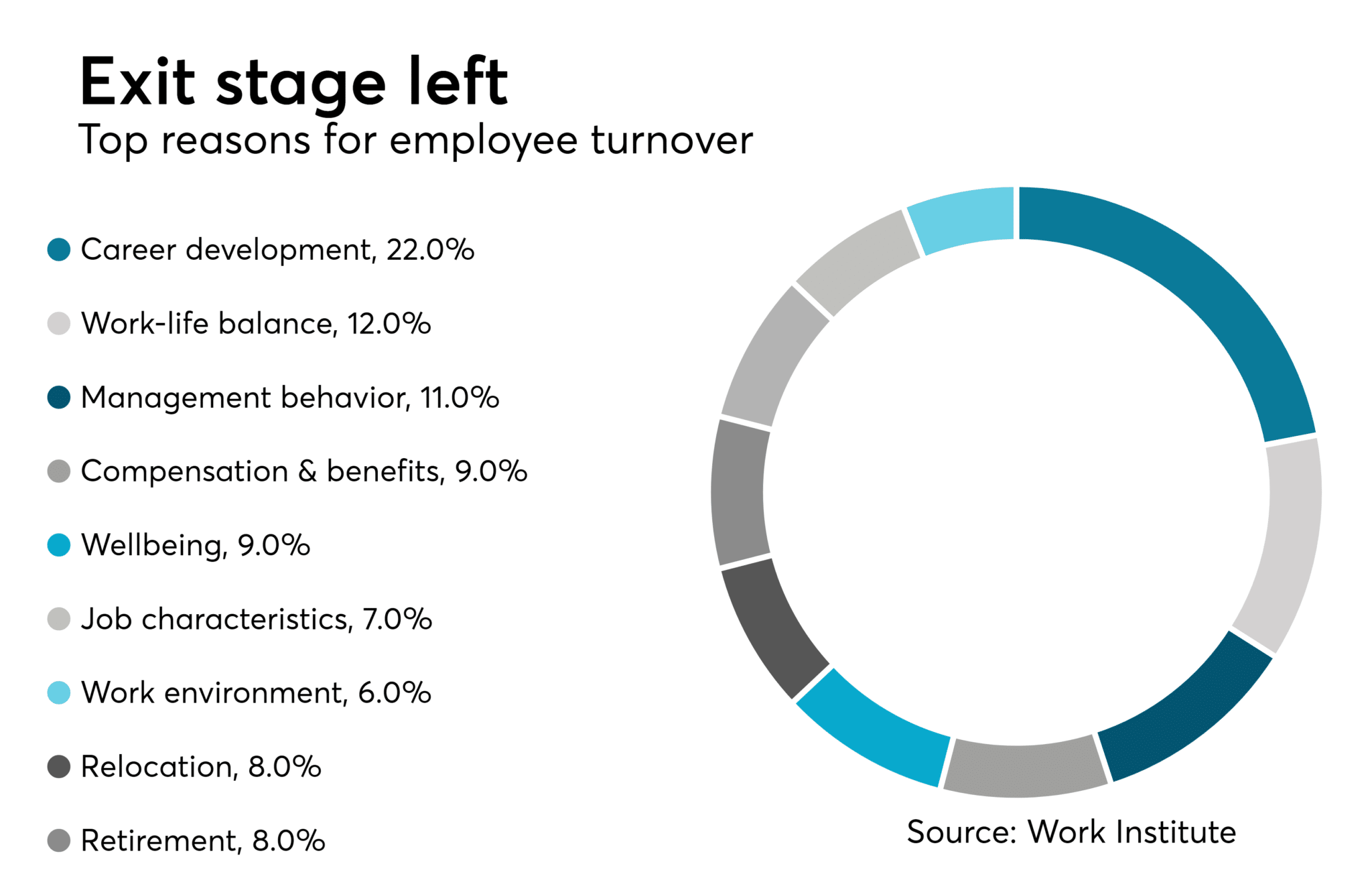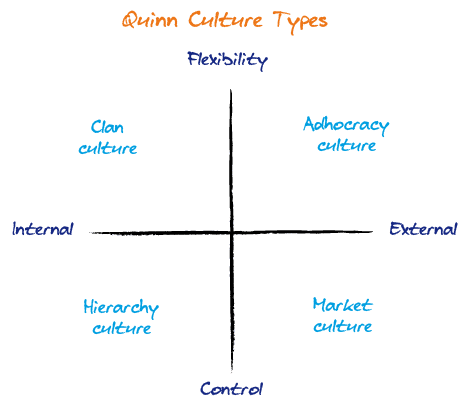Every person has key traits that define them. One of your friends is funny and playful; another, kind and sympathetic; a third, serious and questioning. Sure, people are complex, but you know what your friends are about and can turn to certain people for certain things.
A company should be no different. Every company should have certain values, expectations, and morals that guide and inform the actions of team members. So, when a customer needs something, they know exactly what you’re about and can make a simple and informed decision.
Whether you’re a big company with lots of employees or a small virtual business, organizational culture is important. It informs employee actions and creates unity. Let’s delve deeper into organizational culture and why it’s so important.
What does organizational culture mean?

Group of diverse business people talking in a meeting. Business team smiling during a meeting.
“Culture is simply a shared way of doing something with a passion” – Brian Chesky, Co-Founder, CEO, Airbnb
Put simply, organizational culture refers to a company’s mission, values, objectives, and expectations. A company that focuses on its culture tends to be more successful because it’s constantly trying to improve. Creating an effective workplace culture means putting systems in place to promote employee performance and keep employees engaged, both in their role and in the bigger picture of the company.
A strong culture is often the responsibility of the human resources team. HR should ensure that all employees feel valid and listened to. A great human resources team helps employees to connect and sets the precedent for the company’s culture. A HR team should know that the behavior in organizations is important.
There are many companies with good corporate cultures. Twitter has a desired culture, with employees raving about working there. In fact, when Glassdoor studied the reviews of tens of thousands of employers, Twitter ended up with an average score of 4.5 for culture and values on a scale of 1 to 5.
What makes Twitter special? Like many tech companies, Twitter goes the extra mile to ensure that teamwork is a huge part of its core values. With meetings held in rooftop gardens, charity schemes, and employee perks like gym memberships and healthcare plans, employees are happy to work at Twitter. Their positivity then feeds back into the culture and boosts performance.
Organizational culture is all about inspiring shared assumptions and values and creating a positive work environment. When employees share a healthy culture, the company becomes more connected, thus improving productivity.

Why is it important?
Organizational culture is important for a number of reasons. These include, but are not limited to:
- Employee engagement
- Brand identity and competitive edge
- Decreased turnover
- Effective onboarding
- Healthy team environment
Let’s go into them in more detail.
Employee engagement
Every business owner wants strong employee engagement. The culture of an organization inspires employees to care about their role and about the company itself. Organizational culture inspires employees and sets expectations. It leads to high levels of workforce engagement and, as a result, increases productivity.
If an employee works hard and expresses passion about what they do, this feeling will be passed on to their colleagues. The bottom line is that teamwork inspires employee engagement.
Brand identity and competitive edge
“We have a culture where we are incredibly self critical. We don’t get comfortable with our success” – Mike Parker, CEO, Nike
A company culture represents its public image and representation. We can see this with Nike, which regularly pushes to be better. While some companies can become complacent, Nike ensures that employees never allow themselves to be satisfied. This means that they constantly bring out great new products that break the mold and excite customers. It’s the difference between a brand with one great product and a brand with thousands.
And, a company with a strong brand identity has an edge over its competitors. Two companies can sell similar products, but the one with a strong culture will always win—because employees are more dedicated and connected to the company. So an organization with strong culture creates a competitive advantage.
Decreased turnover
No business owner wants to see a high employee turnover. Companies with a high turnover show a weakness in the business. People will be quick to assume that employees aren’t being properly supported or that there’s an unpleasant work environment.
Organizational culture has a huge impact on employee retention. Employees who make positive relationships at work and connect with others are more likely to stay in the role for longer, causing a decreased turnover.

In this source, it’s clear that career development, work-life balance, and management behavior are the leading reasons for employee turnover. And these three factors link hugely to business culture. Let’s take a deeper look:
- Career development: When a company creates a culture of career development and pushes employees to go on courses and continue to learn, employees stay with that company for longer.
- Work-life balance: When a company culture encourages employees to take time off and go home early, employees feel more valued, therefore sticking with the company.
- Management behavior: When employees are able to have open and honest conversations with management, they feel supported. This means issues are dealt with properly instead of being swept under the rug, and an employee will be less likely to leave due to the way the issue was handled.
Effective onboarding
Onboarding practices are becoming more and more common among businesses. Onboarding practices might include:
- Orientation
- Training
- Buddy systems
- Performance management programs
Effective onboarding increases employee retention, as new starters feel fully integrated into the organization. It helps them to understand the organization’s values and promote them. A company with a strong culture includes new employees and helps them to become part of the team.
Healthy team environment
“[Teamwork] starts with knowing your own strengths and weaknesses, delivering what is expected of you, listening to other team members, communicating clearly, playing more than one role, and being supportive.” Chris Croft, LinkedIn Learning Instructor and management expert
A healthy team environment is essential in all good businesses. Employees that work positively together create better results and are more productive. LinkedIn creates a healthy team environment by focusing on five pillars:
- Transformation
- Integrity
- Collaboration
- Humor
- Results
It’s another company with a collaborative office environment that encourages teamwork and creates a sociable atmosphere.
What are the 4 types of organizational culture?
Organizational culture is something that has been studied in great depth. All business owners want to get the most out of their employees, and this relies on research.
Robert E. Quinn and Kim S. Cameron are important names in types of culture. Working at the University of Michigan, they investigated the qualities that make businesses effective and found four types of organizational cultures. These are generally accepted and influence businesses today. Let’s take a look at organizational subculture.

1. Clan culture
“It’s about getting the best people, retaining them, nurturing a creative environment, and helping to find a way to innovate” – Marissa Mayer, President and CEO, Yahoo
Clan culture is based around a friendly working society where people have a lot in common and connect over what they do. It’s a family. The business is held together with loyalty and tradition, and there’s a huge focus on teamwork and engagement.
Yahoo’s focus on nurturing a creative environment is an example of clan culture. Clan culture prioritizes strong working relationships and inclusion. A human resources department is extremely important in a business trying to embed a clan culture. Clan culture is most commonly found in smaller businesses.
Benefits: Clan culture is great at employee engagement and inspiring teamwork. It creates a positive working environment where employees motivate each other and want to go to love what they do. They’ll probably stick around for longer, too.
Negatives: Some people argue that clan culture can create unhealthy relationships and the business can lack direction. Sometimes a little more authority helps to drive a business forward and establish boundaries.
2. Adhocracy culture
“It’s important for us to create a culture of innovation—one that both values and rewards risk” – Barbara Landes, CFO, PBS
Adhocracy culture is all about being innovative, entrepreneurial, and creative. It’s big. It’s influential. It inspires. It’s based around trendsetting. To be successful, the business will release new products and services. Growth is key. Change is constant.
PBS focuses on a culture of innovation and risk-taking, which are the defining features of adhocracy culture. Other companies with adhocracy culture include Apple, Amazon, and Google, leading businesses that constantly release new products and services to better the customer experience and keep customers excited. Most tech companies pride themselves on innovation.
Benefits: Adhocracy culture is great for inspiring employees and encouraging them to be innovative. It tends to inspire intelligent, motivated, and business-savvy employees who dream big and bring success to the company.
Negatives: With so much emphasis on risk-taking, there’s always the chance that risks might not pay off and you’ll be out of pocket.
3. Market culture
“You want to set goals that you can hit, so when you start hitting them, you can celebrate those wins. People start trusting in your way of projecting the business” – Wiley Cerilli, Founder, former CEO of SinglePlatform
Market culture is all about setting goals and meeting them. It’s results-orientated and competitive, and the employees want to be the best. It’s not just about taking part; it’s about winning. Success and reputation are key.
SinglePlatform highlights the importance of setting goals, which is what market culture is all about. The concept is based around the idea of market selling; battling with other stalls right next to you and beating the competition.
Benefits: Companies with market culture tend to be successful because they know how to beat the competition. Employees will be hard-working and motivated as they’re focused on meeting external goals.
Negatives: Market culture can create an overly competitive environment where employees care less about learning and developing and more about beating others. This can create a toxic working environment that can easily come across to customers and clients. A company’s values should be more about inclusivity instead of individualism.
4. Hierarchy culture
“Play by the rules—but be ferocious” – Phil Knight, Former Chairman and CEO of Nike
Hierarchy cultures are all about structure and stability. It follows rules and patterns. Leaders are efficient, organized, and respected. Procedures are followed to ensure the best practices in the business. The focus is on success and results through low costs, and profitability. A smooth running business is the end goal. It’s about getting it done right.
Nike shows the importance of following rules, even when you’re passionate and driven. You can’t have success through passion or “ferocity” alone; rules must always be followed. Organizations that use hierarchy culture tend to fit into the politics, law, or government categories, as these industries rely on a sturdy structure and hugely value leadership.
Benefits: Hierarchy culture is often seen in successful businesses as they have clear direction. They know how to get success by following patterns and traditions, creating certain results.
Negatives: Hierarchy culture doesn’t leave much space for creativity or freedom. Some employees find this restricting and unfulfilling.
What are organizational culture characteristics?
Organizational culture is about more than building a cool rooftop and getting your employees together to play minigolf. Sure, that might be a way to create a culture, but at first, you need to know why this helps.
Within organization culture, there are certain characteristics that business owners and members of an organization measure. These characteristics determine what kind of culture you will create.
The most important characteristics of organizational culture are the following:
- Innovation and risk-taking: to what degree employees are encouraged to think outside the box and take risks at work
- Attention to detail: how employees are encouraged to analyse and be precise in their working methods
- Outcome orientation: whether employees should focus on the outcome of their work, or focus more on their techniques and methods
- People orientation: how regularly management takes into consideration the effect and outcome of their decisions on others within the organization
- Team orientation: whether employees should focus more on teamwork and a collaborative culture or working individually to reach their end result
- Aggressiveness: the degree of competitiveness involved in the working environment versus a relaxed and cooperative setting
- Stability: how much focus there is on maintaining the norm in comparison to development and growth
How is organizational culture formed?

A culture change doesn’t happen overnight. Business owners need to work hard to inspire certain types of organizational behaviors. Forming an organizational culture takes time. It’s worth knowing your values as a founder and establishing what message you want to be passed onto your employees before starting a business.
However, a culture can also be embedded no matter what stage your business is at, so it isn’t fully necessary to have all the answers before getting started. Often, your employees will help inform the culture you build.
So, how is organizational culture formed?
Mission statement
Firstly, organizational culture can be formed through your mission statement. This is a short statement of why your organization exists and what its overall goal is, alongside displaying a bit about the products or services it provides.
According to Chris Bart, Professor of Strategy and Governance located at McMaster University, a mission statement should always think about the following components:
- The key market: This means understanding your target audience and offering goods that they find beneficial. It’s important to include this in your mission statement so you attract the right customers and don’t lose sight of your business goals.
- Your contribution: What are you offering? Products or services? What kind? This is essential information to include in your mission statement.
- Distinction: This is what separates your business from the competition. What makes you unique? Why should customers buy from you instead of another brand? This must be included in your mission statement so you stand out.
A mission statement sets the tone for the rest of your employees and therefore plays a huge role in your organizational structure. It’s what a new starter will see on their first day, so it will shape their decisions and actions throughout their time working with you.
Hiring practices

Image from Unsplash.com
Hiring practices play a huge role in forming an organizational culture. This is why your HR team is so important in implementing organizational change. Managing the organizational culture is one of the HR department’s key roles. And, HR leaders play a big role in setting the standards, influencing the culture, conducting a cultural assessment, and changing the culture when necessary.
When an employee starts a new company, they take on a huge amount of information in one go. One of the things that will stick is how they were treated as a new starter and what the general “vibe” of the office is. So, it’s important to show your mission statement and integrate them into the pre-existing culture.
It’s a cyclical process. Say your business tends toward clan culture. If a new starter is invited to lunch by a fellow employee, they will quickly catch onto the focus on teamwork and supportiveness. So, a year later when someone new joins the team, they’ll invite them to lunch and pass on the culture. The onboarding process is essential in developing organizational culture.
This isn’t just the case for office work, though. Culture can be formed even when remote working. Organizational culture can occur when working from anywhere, provided communication is on point and employees are trusted.
For example, a new study conducted by CITE Research in partnership with Kaleido Insights showed that embracing a “connected culture” leads to significant gains in employee productivity and well-being. The study polled 4,000 knowledge workers across four countries about their levels of productivity, well-being, and connection to team members following moving to remote work with the onset of the pandemic.
So, if teams are well connected and able to communicate from anywhere, you will improve organizational culture.
Make sure your hiring process reflects the values of your business. If employees get a taste for the culture from day one, they’ll implement your desired working methods from the get-go.
Employee handbooks
While organizational culture is often picked up from fellow employees and leadership figures, it can also be formed through written documents.
Handbooks ensure that, if an employee isn’t sure about something, they can double-check the guidelines before making any decisions. A digital handbook is especially useful in making this information available any time, any place.
Organizational culture plays a huge role in your employees decisions and actions. You want to ensure that your brand has a consistent voice that represents your values, so it’s important to make these guidelines accessible. A great business keeps its employees well informed and strong leaders know that communication is key.
Create your culture
Organizational culture is important because it creates unity. It ensures that all group members know how to behave and represent the business in an appropriate way. Organizational culture does so much more than create a fun working atmosphere: it reveals the heart of your business. It tells customers what you’re about and differentiates you from your competitors.
So, organizational culture should never be overlooked. If you’re not sure where to start, go back to the basics. Why did you start your business? What does it mean to you? What message do you want your employees to convey?
Once you’ve got the answers, organizational culture isn’t so hard. Go on, create your culture.
Originally published Jan 18, 2021, updated Jul 24, 2024





